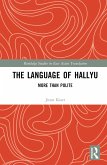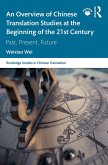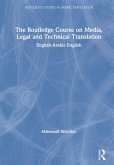Pawe¿ Kida
Missionary Grammars and the Language of Translation in Korea (1876-1910)
Pawe¿ Kida
Missionary Grammars and the Language of Translation in Korea (1876-1910)
- Broschiertes Buch
- Merkliste
- Auf die Merkliste
- Bewerten Bewerten
- Teilen
- Produkt teilen
- Produkterinnerung
- Produkterinnerung
Missionary Grammars and the Language of Translation in Korea 1876-1910 embraces the Enlightenment period in Korea (1876-1910) after the opening of the so-called 'Hermit Nation' in describing the Korean language and missionary works.
Andere Kunden interessierten sich auch für
![Frontiers of Translation in Korean Language Education Frontiers of Translation in Korean Language Education]() Frontiers of Translation in Korean Language Education180,99 €
Frontiers of Translation in Korean Language Education180,99 €![[FULL COLOR] KOREAN CULTURE DICTIONARY - From Kimchi To K-Pop and K-Drama Clichés. Everything About Korea Explained! [FULL COLOR] KOREAN CULTURE DICTIONARY - From Kimchi To K-Pop and K-Drama Clichés. Everything About Korea Explained!]() Woosung Kang[FULL COLOR] KOREAN CULTURE DICTIONARY - From Kimchi To K-Pop and K-Drama Clichés. Everything About Korea Explained!66,99 €
Woosung Kang[FULL COLOR] KOREAN CULTURE DICTIONARY - From Kimchi To K-Pop and K-Drama Clichés. Everything About Korea Explained!66,99 €![Korean For Everyone - Complete Self-Study Program Korean For Everyone - Complete Self-Study Program]() Bridge EducationKorean For Everyone - Complete Self-Study Program18,99 €
Bridge EducationKorean For Everyone - Complete Self-Study Program18,99 €![[FULL COLOR] KOREAN CULTURE DICTIONARY - From Kimchi To K-Pop a\nd K-Drama Clichés. Everything About Korea Explained! [FULL COLOR] KOREAN CULTURE DICTIONARY - From Kimchi To K-Pop a\nd K-Drama Clichés. Everything About Korea Explained!]() Woosung Kang[FULL COLOR] KOREAN CULTURE DICTIONARY - From Kimchi To K-Pop a\nd K-Drama Clichés. Everything About Korea Explained!45,99 €
Woosung Kang[FULL COLOR] KOREAN CULTURE DICTIONARY - From Kimchi To K-Pop a\nd K-Drama Clichés. Everything About Korea Explained!45,99 €![The Language of Hallyu The Language of Hallyu]() Jieun KiaerThe Language of Hallyu172,99 €
Jieun KiaerThe Language of Hallyu172,99 €![An Overview of Chinese Translation Studies at the Beginning of the 21st Century An Overview of Chinese Translation Studies at the Beginning of the 21st Century]() Weixiao WeiAn Overview of Chinese Translation Studies at the Beginning of the 21st Century170,99 €
Weixiao WeiAn Overview of Chinese Translation Studies at the Beginning of the 21st Century170,99 €![The Routledge Course on Media, Legal and Technical Translation The Routledge Course on Media, Legal and Technical Translation]() Mahmoud AltarabinThe Routledge Course on Media, Legal and Technical Translation174,99 €
Mahmoud AltarabinThe Routledge Course on Media, Legal and Technical Translation174,99 €-
-
-
Missionary Grammars and the Language of Translation in Korea 1876-1910 embraces the Enlightenment period in Korea (1876-1910) after the opening of the so-called 'Hermit Nation' in describing the Korean language and missionary works.
Produktdetails
- Produktdetails
- Verlag: Routledge
- Seitenzahl: 214
- Erscheinungstermin: 30. Juli 2025
- Englisch
- Abmessung: 234mm x 156mm x 12mm
- Gewicht: 333g
- ISBN-13: 9781032679679
- ISBN-10: 1032679670
- Artikelnr.: 74435365
- Herstellerkennzeichnung
- Libri GmbH
- Europaallee 1
- 36244 Bad Hersfeld
- gpsr@libri.de
- Verlag: Routledge
- Seitenzahl: 214
- Erscheinungstermin: 30. Juli 2025
- Englisch
- Abmessung: 234mm x 156mm x 12mm
- Gewicht: 333g
- ISBN-13: 9781032679679
- ISBN-10: 1032679670
- Artikelnr.: 74435365
- Herstellerkennzeichnung
- Libri GmbH
- Europaallee 1
- 36244 Bad Hersfeld
- gpsr@libri.de
Pawe¿ Kida, PhD, Chief of Korean Language Department, Faculty of Ethnolinguistics, Adam Mickiewicz University Poznä, Poland.
List of Figures
List of Tables
Acknowledgments
Preface
Preliminaries
Abbreviations
1. METAGRAMMATICAL THOUGHT
1.1. Foreign evaluation of former Korean grammar
1.2. Korean evaluation of former Korean grammar
1.3. Missionary Grammars
2. AUTHORS AND GRAMMARS' CONTENT
2.1. John Ross (1842-1915)
2.2. Felix-Clair Ridel (1830-1884)
2.3. James Scott (1850-1920)
2.4. Camille Imbault-Huart (1857-1897)
2.5. Horace Grant Underwood (1859-1916)
2.6. James Scrath Gale (1863-1937)
2.7. Annie Laurie Baird (1864-1916)
3. MORPHOSYNTACTIC MODEL
3.1. Partes Orationis
3.1.1. Noun
3.1.1.1. Case
3.1.1.2. Gender
3.1.1.3. Number
3.1.2. Pronoun
3.1.2.1. Personal
3.1.2.2. Demonstrative
3.1.2.3. Reflexive
3.1.2.4. Interrogative
3.1.2.5. Indefinite
3.1.2.6. Possessive
3.1.2.7. Relative
3.1.2.8. Distributive
3.1.3. Numeral
3.1.3.1. Cardinal
3.1.3.2. Ordinal
3.1.3.3. Fractional
3.1.3.4. Multiplicative
3.1.3.5. Classifiers
3.1.4. Verb
3.1.4.1. Voice
3.1.4.2. Mood
3.1.4.3. Tense
3.1.4.4. Conjugation
3.1.4.5. Basal Conjugation
3.1.4.6. Participle
3.1.4.7. Auxiliary Verb
3.1.4.8. Verbal noun
3.1.4.9. Gerundive/Supine
3.1.5. Adjective
3.1.5.1. Comparative degree
3.1.5.2. Superlative degree
3.1.6. Adverb
3.1.7. Postposition
3.1.8. Conjunction
3.1.9. Interjection
3.2. Sententiae Structura
3.2.1. Negation
3.2.2. Passive
3.2.3. Causative
3.2.4. Honorifics
3.2.5. Indirect Speech
Conclusions
Bibliography
Grammatical Units and Korean Words
Index
List of Tables
Acknowledgments
Preface
Preliminaries
Abbreviations
1. METAGRAMMATICAL THOUGHT
1.1. Foreign evaluation of former Korean grammar
1.2. Korean evaluation of former Korean grammar
1.3. Missionary Grammars
2. AUTHORS AND GRAMMARS' CONTENT
2.1. John Ross (1842-1915)
2.2. Felix-Clair Ridel (1830-1884)
2.3. James Scott (1850-1920)
2.4. Camille Imbault-Huart (1857-1897)
2.5. Horace Grant Underwood (1859-1916)
2.6. James Scrath Gale (1863-1937)
2.7. Annie Laurie Baird (1864-1916)
3. MORPHOSYNTACTIC MODEL
3.1. Partes Orationis
3.1.1. Noun
3.1.1.1. Case
3.1.1.2. Gender
3.1.1.3. Number
3.1.2. Pronoun
3.1.2.1. Personal
3.1.2.2. Demonstrative
3.1.2.3. Reflexive
3.1.2.4. Interrogative
3.1.2.5. Indefinite
3.1.2.6. Possessive
3.1.2.7. Relative
3.1.2.8. Distributive
3.1.3. Numeral
3.1.3.1. Cardinal
3.1.3.2. Ordinal
3.1.3.3. Fractional
3.1.3.4. Multiplicative
3.1.3.5. Classifiers
3.1.4. Verb
3.1.4.1. Voice
3.1.4.2. Mood
3.1.4.3. Tense
3.1.4.4. Conjugation
3.1.4.5. Basal Conjugation
3.1.4.6. Participle
3.1.4.7. Auxiliary Verb
3.1.4.8. Verbal noun
3.1.4.9. Gerundive/Supine
3.1.5. Adjective
3.1.5.1. Comparative degree
3.1.5.2. Superlative degree
3.1.6. Adverb
3.1.7. Postposition
3.1.8. Conjunction
3.1.9. Interjection
3.2. Sententiae Structura
3.2.1. Negation
3.2.2. Passive
3.2.3. Causative
3.2.4. Honorifics
3.2.5. Indirect Speech
Conclusions
Bibliography
Grammatical Units and Korean Words
Index
List of Figures
List of Tables
Acknowledgments
Preface
Preliminaries
Abbreviations
1. METAGRAMMATICAL THOUGHT
1.1. Foreign evaluation of former Korean grammar
1.2. Korean evaluation of former Korean grammar
1.3. Missionary Grammars
2. AUTHORS AND GRAMMARS' CONTENT
2.1. John Ross (1842-1915)
2.2. Felix-Clair Ridel (1830-1884)
2.3. James Scott (1850-1920)
2.4. Camille Imbault-Huart (1857-1897)
2.5. Horace Grant Underwood (1859-1916)
2.6. James Scrath Gale (1863-1937)
2.7. Annie Laurie Baird (1864-1916)
3. MORPHOSYNTACTIC MODEL
3.1. Partes Orationis
3.1.1. Noun
3.1.1.1. Case
3.1.1.2. Gender
3.1.1.3. Number
3.1.2. Pronoun
3.1.2.1. Personal
3.1.2.2. Demonstrative
3.1.2.3. Reflexive
3.1.2.4. Interrogative
3.1.2.5. Indefinite
3.1.2.6. Possessive
3.1.2.7. Relative
3.1.2.8. Distributive
3.1.3. Numeral
3.1.3.1. Cardinal
3.1.3.2. Ordinal
3.1.3.3. Fractional
3.1.3.4. Multiplicative
3.1.3.5. Classifiers
3.1.4. Verb
3.1.4.1. Voice
3.1.4.2. Mood
3.1.4.3. Tense
3.1.4.4. Conjugation
3.1.4.5. Basal Conjugation
3.1.4.6. Participle
3.1.4.7. Auxiliary Verb
3.1.4.8. Verbal noun
3.1.4.9. Gerundive/Supine
3.1.5. Adjective
3.1.5.1. Comparative degree
3.1.5.2. Superlative degree
3.1.6. Adverb
3.1.7. Postposition
3.1.8. Conjunction
3.1.9. Interjection
3.2. Sententiae Structura
3.2.1. Negation
3.2.2. Passive
3.2.3. Causative
3.2.4. Honorifics
3.2.5. Indirect Speech
Conclusions
Bibliography
Grammatical Units and Korean Words
Index
List of Tables
Acknowledgments
Preface
Preliminaries
Abbreviations
1. METAGRAMMATICAL THOUGHT
1.1. Foreign evaluation of former Korean grammar
1.2. Korean evaluation of former Korean grammar
1.3. Missionary Grammars
2. AUTHORS AND GRAMMARS' CONTENT
2.1. John Ross (1842-1915)
2.2. Felix-Clair Ridel (1830-1884)
2.3. James Scott (1850-1920)
2.4. Camille Imbault-Huart (1857-1897)
2.5. Horace Grant Underwood (1859-1916)
2.6. James Scrath Gale (1863-1937)
2.7. Annie Laurie Baird (1864-1916)
3. MORPHOSYNTACTIC MODEL
3.1. Partes Orationis
3.1.1. Noun
3.1.1.1. Case
3.1.1.2. Gender
3.1.1.3. Number
3.1.2. Pronoun
3.1.2.1. Personal
3.1.2.2. Demonstrative
3.1.2.3. Reflexive
3.1.2.4. Interrogative
3.1.2.5. Indefinite
3.1.2.6. Possessive
3.1.2.7. Relative
3.1.2.8. Distributive
3.1.3. Numeral
3.1.3.1. Cardinal
3.1.3.2. Ordinal
3.1.3.3. Fractional
3.1.3.4. Multiplicative
3.1.3.5. Classifiers
3.1.4. Verb
3.1.4.1. Voice
3.1.4.2. Mood
3.1.4.3. Tense
3.1.4.4. Conjugation
3.1.4.5. Basal Conjugation
3.1.4.6. Participle
3.1.4.7. Auxiliary Verb
3.1.4.8. Verbal noun
3.1.4.9. Gerundive/Supine
3.1.5. Adjective
3.1.5.1. Comparative degree
3.1.5.2. Superlative degree
3.1.6. Adverb
3.1.7. Postposition
3.1.8. Conjunction
3.1.9. Interjection
3.2. Sententiae Structura
3.2.1. Negation
3.2.2. Passive
3.2.3. Causative
3.2.4. Honorifics
3.2.5. Indirect Speech
Conclusions
Bibliography
Grammatical Units and Korean Words
Index

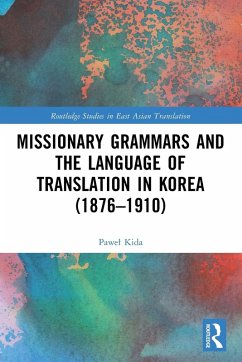
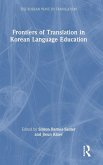
![[FULL COLOR] KOREAN CULTURE DICTIONARY - From Kimchi To K-Pop and K-Drama Clichés. Everything About Korea Explained! [FULL COLOR] KOREAN CULTURE DICTIONARY - From Kimchi To K-Pop and K-Drama Clichés. Everything About Korea Explained!](https://bilder.buecher.de/produkte/60/60685/60685854m.jpg)
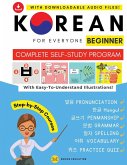
![[FULL COLOR] KOREAN CULTURE DICTIONARY - From Kimchi To K-Pop a\nd K-Drama Clichés. Everything About Korea Explained! [FULL COLOR] KOREAN CULTURE DICTIONARY - From Kimchi To K-Pop a\nd K-Drama Clichés. Everything About Korea Explained!](https://bilder.buecher.de/produkte/68/68315/68315518m.jpg)
